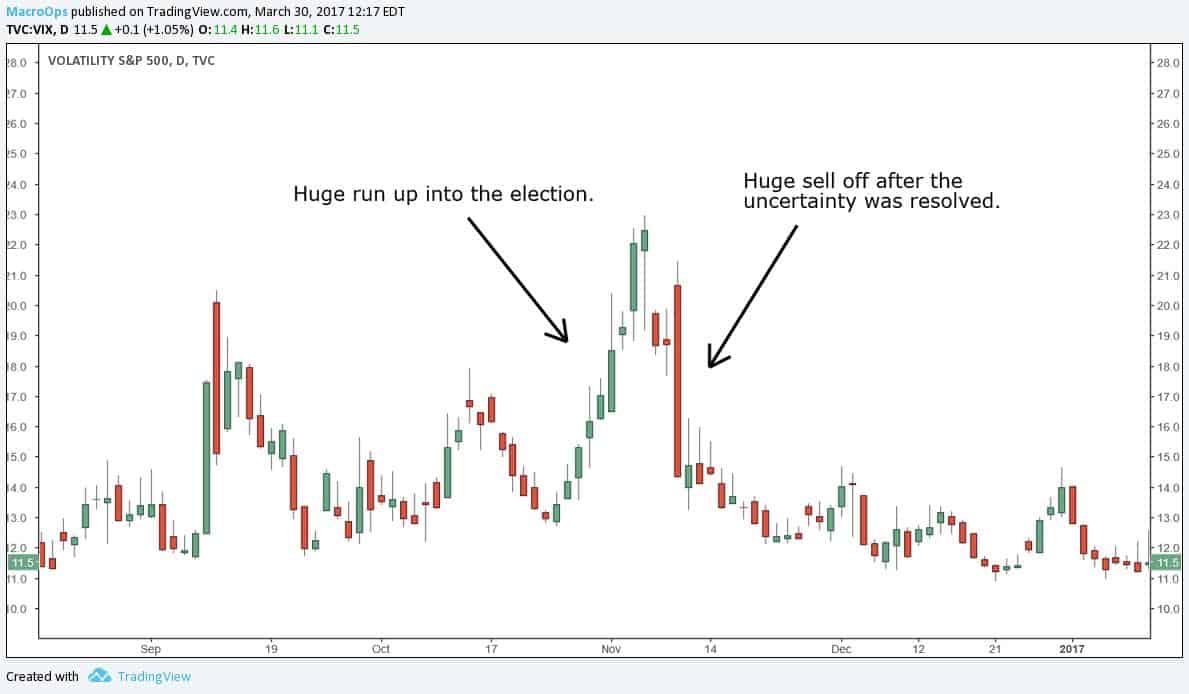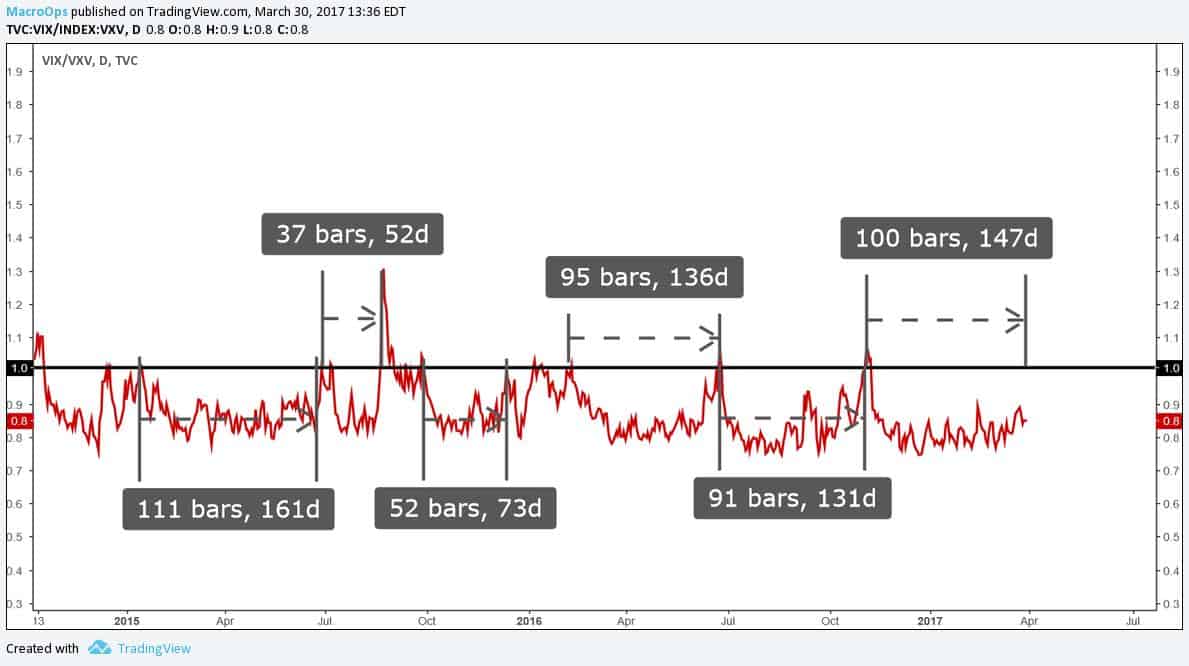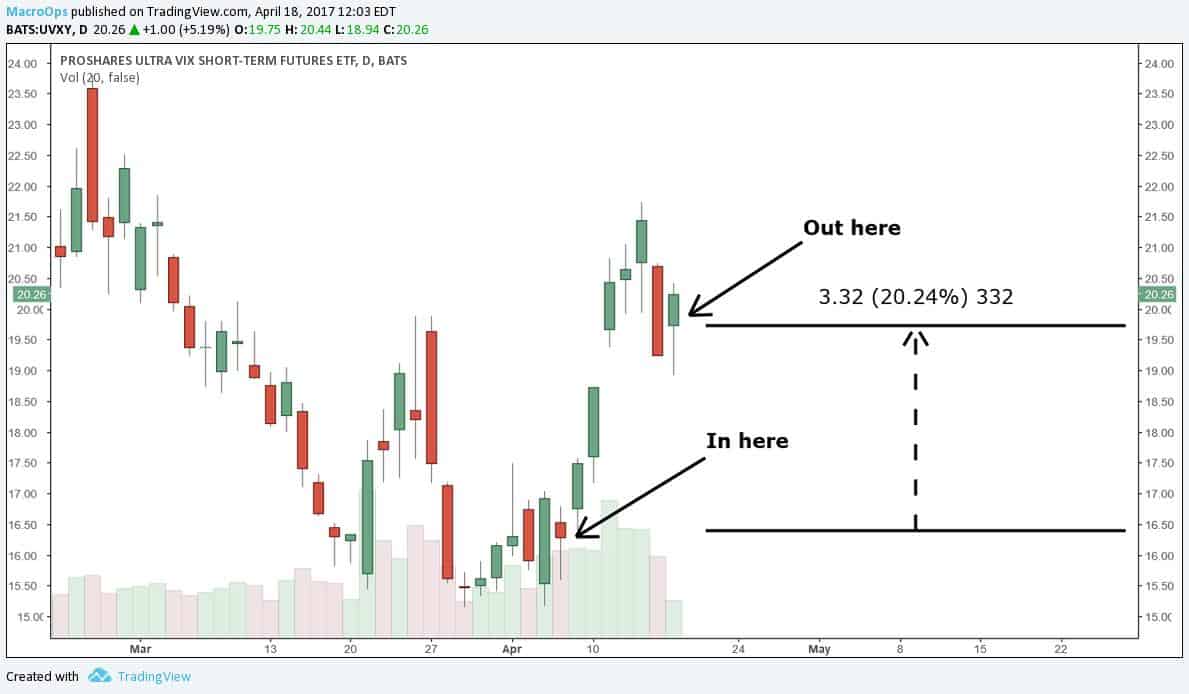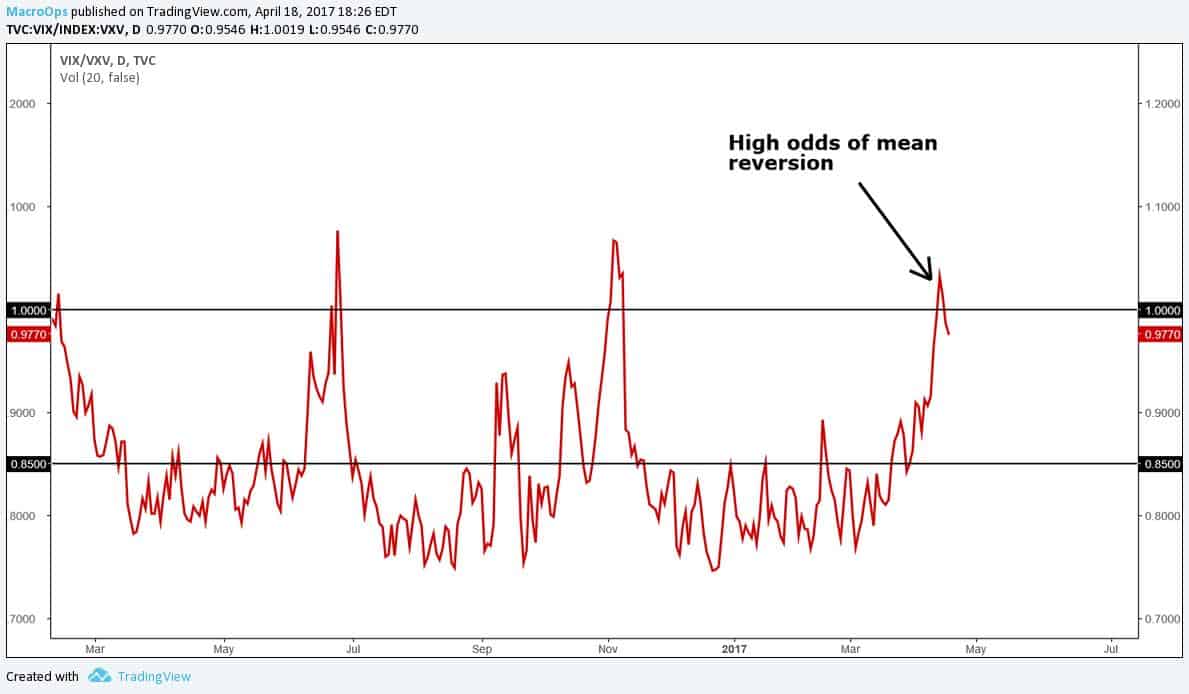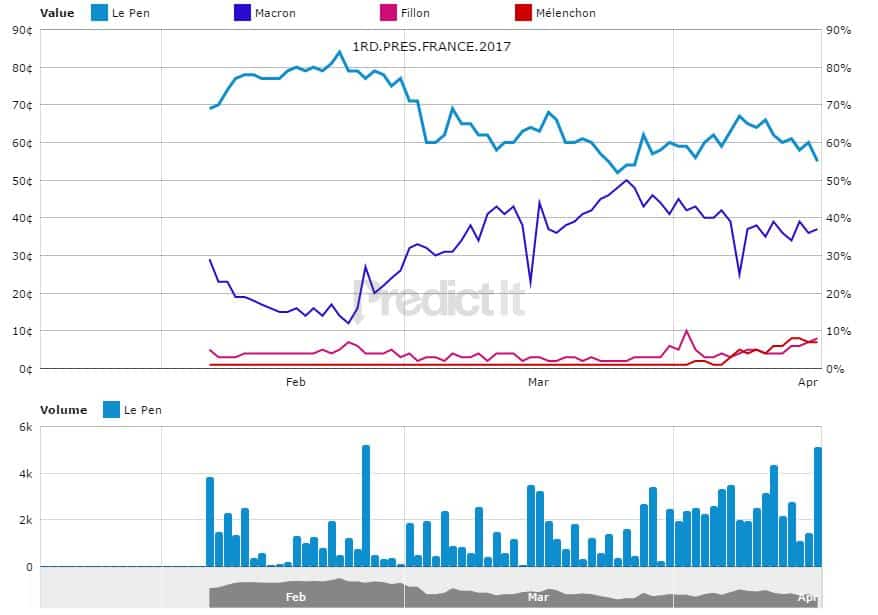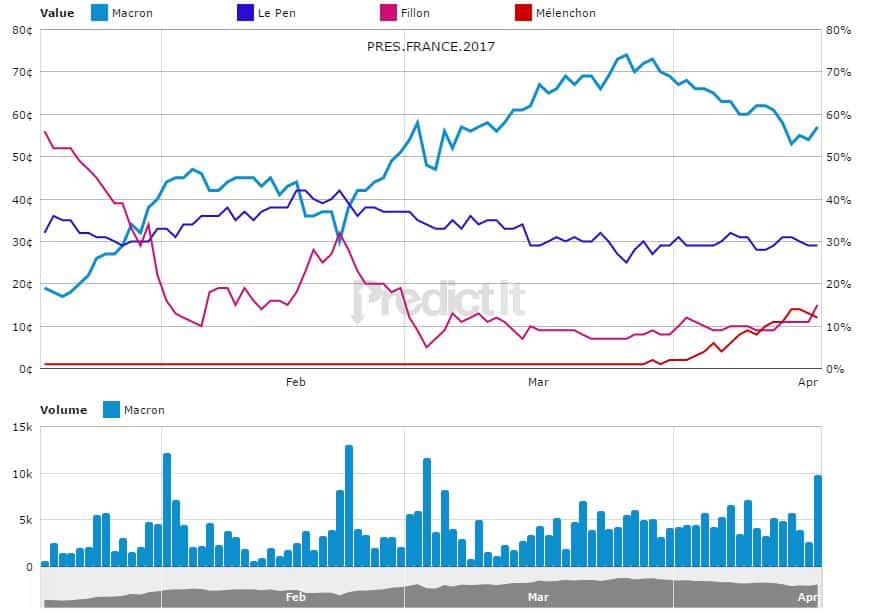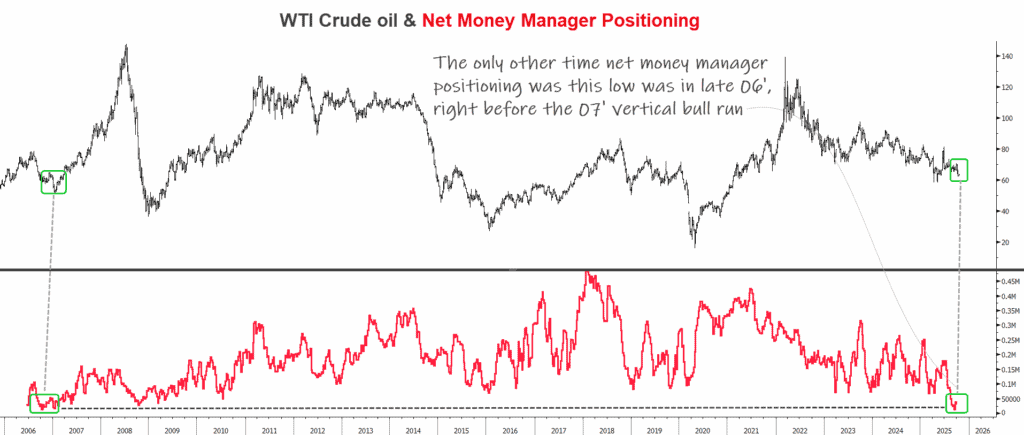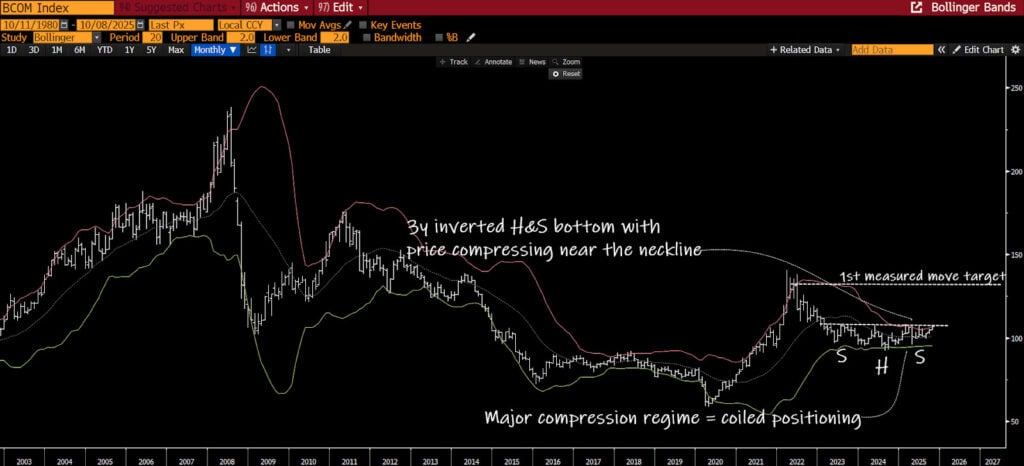Attempting to predict the outcome of an election is a fool’s errand — we don’t bother with it.
But that doesn’t mean we can’t make money off the vote…
Over the last few weeks we’ve discussed the reasons for the rise of populism and how it’s impacted the false trend in European equities. We explained how these Soros-style false moves are dependent on narrative “tests” that either strengthen the trend or reverse it. In Europe’s case, its narrative test is arriving in the form of French elections.
This year’s elections are pivotal because the French are dangerously close to electing a populist, anti-euro candidate named Marine Le Pen. If she clenches a victory, there’s a good chance France will leave the EU, hammering the final nail into the coffin of the European experiment. The aftermath will quickly negate the short-term positives driving European equities.
The general consensus is that Le Pen will lose. But this is only one possibility. There’s also a good chance Le Pen actually wins. Like we said, no point in trying to predict the outcome directly. We’d rather put our money in something clear cut when it comes to these narrative “tests”. And that something is volatility.
The way we play volatility heading into macro events is based off how vol behaves around equity earnings. Take a look at Amazon’s option volatility below:
The red dotted lines denote earnings announcements, and the blue line is the implied volatility of the weekly options. (To learn more about implied volatility and options click here.)
The pattern is clear. As earnings approach, traders bid up implied volatility. This reflects the increased uncertainty that comes with a data release. The results serve as a narrative “test” for the stock. After earnings are announced, implied volatility plummets as pent up uncertainty is resolved. You can see this in the chart. The blue line crashes to normal levels after each earnings date.
Extrapolating this pattern into macro land means going long vol into uncertain events. And then being short vol over the event to benefit from the vol crush after the uncertainty is resolved.
We executed this exact strategy during the U.S. elections. It played out perfectly. VIX ran up before the event and sold off hard afterwards.
The VIX puts we traded post U.S. elections were one of our more profitable trades in 2016.
For the French elections we wanted to pull from the same playbook.
The European stock market has its own volatility index called VSTOXX. It’s their version of the VIX. They also have futures on VSTOXX making it possible to bet directly on vol.
But in this case, VSTOXX futures weren’t the best option to play the French elections. They had already priced in the coming volatility.
VIX futures on the other hand were sitting in a quiet range near lows.
And on top of the election catalyst, U.S. markets had gone a while without the VIX term structure inverting (represented by a value over 1.00 in the chart). At the time it had been 147 straight days of peace and quiet since Trump’s win. And as we know, long periods of low volatility tend to precede a large spike.
There was clearly a trade here.
We ended up pulling the trigger and going long vol using UVXY on April 6th (our Hub members were alerted to the trade immediately).
Over the next week UVXY ripped as traders rushed for cheaper hedges into the French elections. Our UVXY position appreciated 20% in six days before we exited.
The original plan was to hold into the Friday before French elections. But Monday’s price action warranted an exit. The vol term structure (VIX/VXV) closed below 1.00. Historically speaking, this was a reliable signal that VIX would continue to mean revert lower.
Vol could still spike more before elections, but the risk/reward isn’t good enough to continue holding. At current levels the trade is more of a 50/50 proposition than 80/20 like when we first entered. We aren’t in the business of betting on fair coins. We need edge. It was time to take profits and move on.
But lucky for us the fun isn’t over. Things are getting more interesting as the election approaches. According to prediction markets Le Pen is expected to win the most votes of any candidate in the first round of elections on April 23rd. She’s represented by the light blue line below.
French elections are conducted over two rounds. The first includes all 5 presidential candidates. To secure the seat in the first round, a candidate needs over 50% of the votes. Otherwise the elections go to a second round between the top two candidates. So although Le Pen is expected to win the most votes on the 23rd, it likely won’t be enough to end the election. The race will go on to a second round on May 7th. Emmanuel Macron (the safe bet) is the favorite to win the second round because both Fillon and Melenchon voters are expected to support him over Le Pen. (Macron is pictured in light blue below.)
We made good money betting on vol into the first round of elections. The plan now is to sit back and see how things shake out on the 23rd. From there we’ll look and see if any volatility trades look attractive for the second round. Our upcoming May edition of the Macro Intelligence Report (MIR) will have all the details. To learn more about the MIR and how you can profit alongside us, click here.


